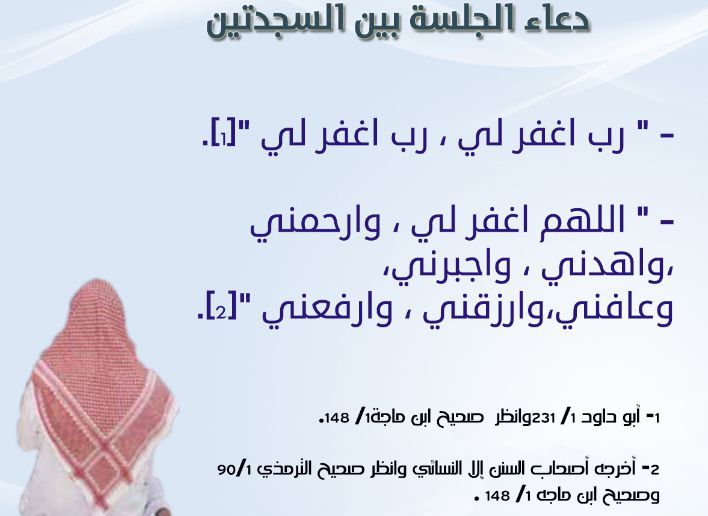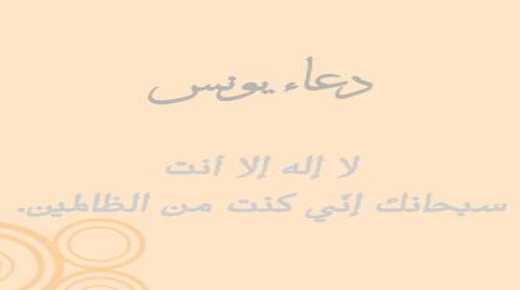
Worship in Islamic law is a stop-worship, that is, as it was reported on the authority of the Prophet (may God bless him and grant him peace), and prayer is the greatest pillar in Islam, and it has a set of pillars that must be adhered to in order to accept prayer, and the Sunnahs that leaving it does not invalidate the prayer but reduces its reward, and from the Sunnahs of prayer It is sitting between the two prostrations and saying the remembrance of the Prophet (may God bless him and grant him peace), and this is what we explain in the following article.
What is said between the two prostrations?
Every Muslim must know and learn the pillars and Sunnahs of prayer, and learn the mistakes of prayer in order to avoid them in order to perform the prayer to the fullest extent in order to please God (swt). Abu Hurairah (may God be pleased with him): “Then rise until you are at ease sitting.”
What is meant is to rise from prostration, and this is evidence that you should sit between the two prostrations, and it is Sunnah for the worshiper to supplicate during this sitting, and there are many supplications from the Prophet (may God bless him and grant him peace) that were mentioned in this matter, including:
- “Lord forgive me, Lord forgive me” Narrated by Al-Nasai and Ibn Majah.
- “O Allah, forgive me, have mercy on me, heal me, guide me, and provide for me.” Narrated by Abu Dawud.
- As for what was narrated by Al-Tirmidhi, he said: “and force me” instead of “and heal me.”
Supplication between the two prostrations
- One of the conditions for accepting the prayer is achieving tranquility in its pillars and between the pillars as well, as tranquility is one of the pillars of prayer, and from here one of the conditions for accepting the supplication between the two prostrations is moderation by sitting in the manner mentioned by the Messenger (may God bless him and grant him peace), and saying one of the supplications mentioned by the Holy Prophet Then supplication for what pleases us, and we ask God for the best of the two homes for us and for those we love.
- Many Muslims abandon some of the Sunnahs either because they are ignorant of them or because they are preoccupied with the worries and difficulties of life and their preoccupation with work. Prolonging a person’s sitting between the two prostrations is an abandoned Sunnah, or it is possible that many Muslims do not know it.
- You find some Muslims entering the prayer, but with a busy heart, clicking bowing and prostration, but what is obligatory upon him in prayer is to complete his bowing and prostration.
- If a Muslim finishes standing up from prostration, says the takbeer, then sits reassuringly, then it is Sunnah to supplicate: “Lord forgive me, Lord forgive me, Lord forgive me.” And if he wants something more, then there is nothing wrong with that, but he has to pray a lot, asking for forgiveness.
The seven supplications between the two prostrations
Reminding a Muslim to supplicate between the two prostrations is a proven Sunnah from the Prophet (may God bless him and grant him peace). Among the hadiths that explain how this sitting is and what is said in it, it was on the authority of Ibn Abbas (may God be pleased with them both) that the Messenger of God (may God bless him and grant him peace) used to say Between the two prostrations: “Oh God, forgive me, have mercy on me, force me, guide me, and provide for me.” Narrated by Al-Tirmidhi and authenticated by Al-Albani.
This hadith has several other narrations, some of which were missing or added, and the sum of the hadiths that were narrated about how this supplication is, seven words: (Oh God, forgive me, have mercy on me, force me, guide me, heal me, and raise me up).
Imam al-Nawawi said that it is a matter of precaution and in order for a Muslim to be keen on hitting the Sunnah by combining the different narrations of this hadith through his collection of the seven words that were mentioned in the noble hadiths of the Prophet.
What is the ruling on supplication between the two prostrations?

- The legal rulings in our true religion vary between several levels, including what is obligatory and what is Sunnah, and the Prophet (may God bless him and grant him peace) commanded us, and there are what is desirable and what is hated, and other rulings.
- Many Muslims are preoccupied with knowing whether the supplication between the two prostrations is from the Sunnah or is it obligatory, and therefore we would like to clarify this, by listing some of the hadiths and narrations that were said in this regard.
- One of the established Sunnahs is that a Muslim supplicate while sitting reassuringly between the two prostrations, and this was proven on the authority of the Messenger of God (may God bless him and grant him peace) in more than one hadith, and it was mentioned in the previous lines of the article.
- A number of scholars differed in issuing the ruling on that supplication, as the majority of scholars preferred that it is desirable and not obligatory among the duties prescribed for a Muslim in prayer.
- But this issue is not correct for it to be the subject of disagreement, dispute, exaggerated argument, or separation between Muslims, because there are many sayings regarding the ruling on this supplication, and each of those sayings has valid evidence in our Islamic law, so there is no embarrassment in following one of the sayings, in several matters there is There is a difference of opinion between scholars or among jurists, so you find it Sunnah for some and obligatory for others, so we can take the precaution and say the supplication in one of the ways mentioned previously.



